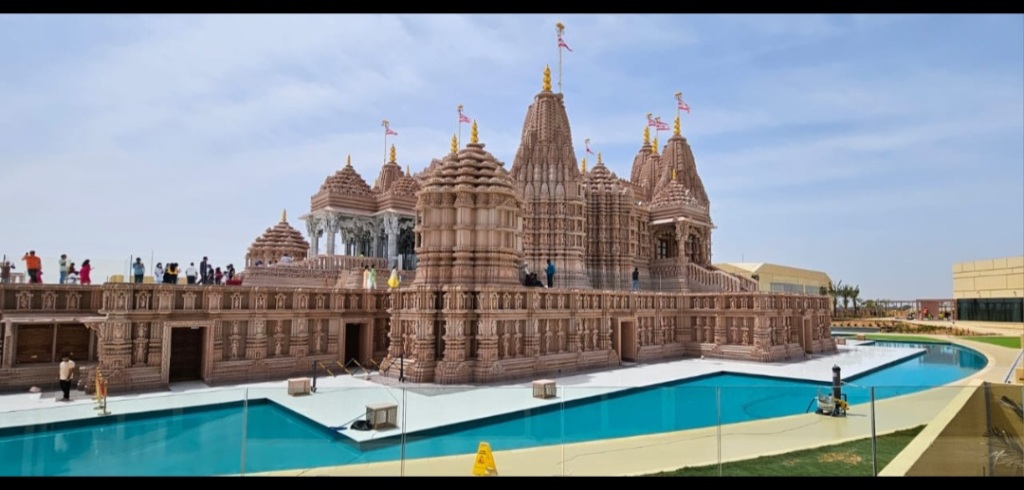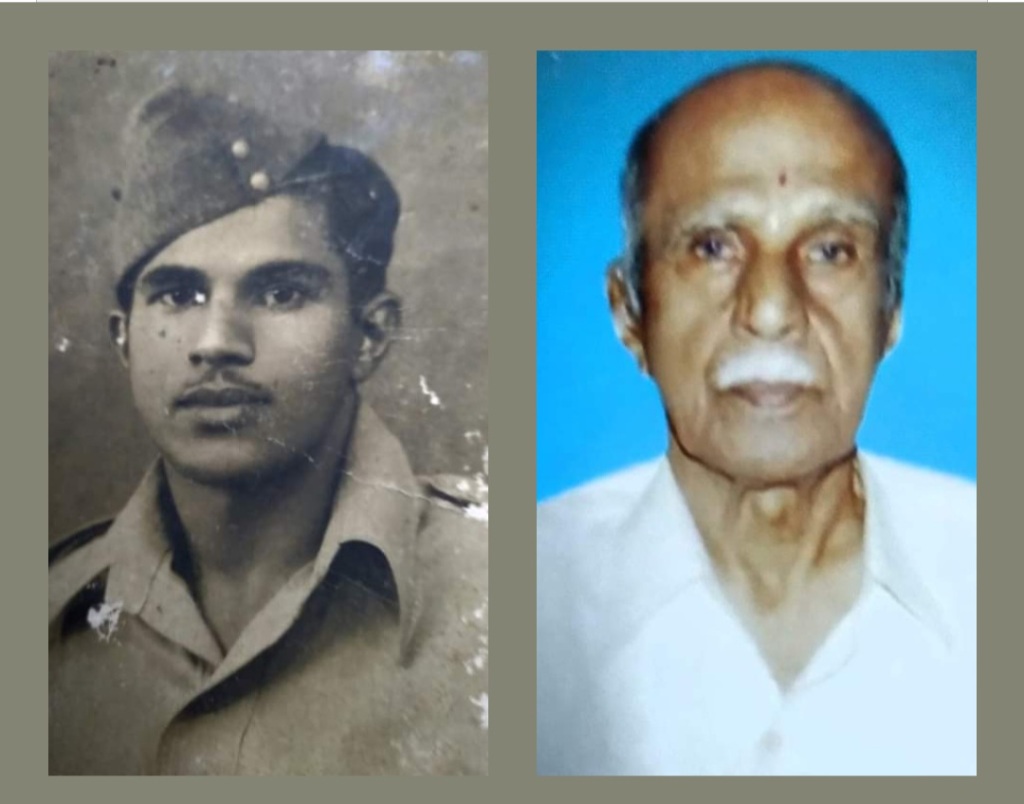As one cruises along the Sheikh Zayed Highway and takes a deviation at Abu Mureikha, some 30 minutes from the city of Abu Dhabi, UAE, one can spot the Baps Hindu Mandir in the distance like a mirage rising over the gleaming desert sands.
The closer you approach it, the architectural marvel towers over and above you, its 7 spires set majestically against the blue cloudless sky. As I stood gazing at the stupendously carved stone structure on a warm morning in March 2024, I remembered a previous post of mine written 3 years ago in 2021 – A temple in Abu Dhabi – a mirage or a miracle . The idea for the post had been conceived in the exact spot, as I stood in front of the about-to-be-constructed temple, then. I was as emotional and awe struck as the rest of the visitors back then, to be witnessing history in the making. For, just a few years back, who in their wildest dreams could ever have imagined a HINDU temple in the heart of the harsh and unrelenting deserts of the Gulf!
This time around, with a special visit permit arranged for us by one of the volunteers – Shri Padmanabha Acharya and a friendly and well-informed young guide accompanying us around the temple premises, to the concluding meeting with the temple-in-charge Shri Umesh Raj inside the cool interiors of the temple majlis, the entire visit was a divine one, and an eye-opener!
My eyes certainly grew round and wide and moist as I gazed at the intricate carvings on the pillars, on the walls and high up on the ceilings; and my breath caught as I listened to the guide explaining the significance of each stone. I realised then that even a stone has its own destiny in the large scheme of things.
In the temple, every single stone is there with a purpose, fulfilling its destiny. If stones can tell stories, then collectively, these meticulously carved pink and white stones tell us beautiful stories – stories of mythology, of legends and of spirituality.
The mandir draws inspiration from the Vedic architecture, sculpture and philosophy, yet it incorporates the culture and ideology of the very land it stands upon. It is a strong and bold testimony to the cordial relations between two nations – India and the UAE. A symbol of love, respect and gratitude from both sides – from the thousands, nay millions of Indians who have crossed its threshold over the years and made the UAE their home, benefitting immensely in the process and from the locals who realised and appreciated the vast contribution of these very people, in the growth of their country.
Besides being a place of worship, the temple serves as a guiding light to the path forward to a new world – a world of inclusivity, of tolerance, of harmony and peaceful co-existence.
The Baps Hindu Mandir, the 1st traditional Hindu temple in the Gulf, is truly a mirage for the past, a miracle for the present and a torch bearer for the future.


